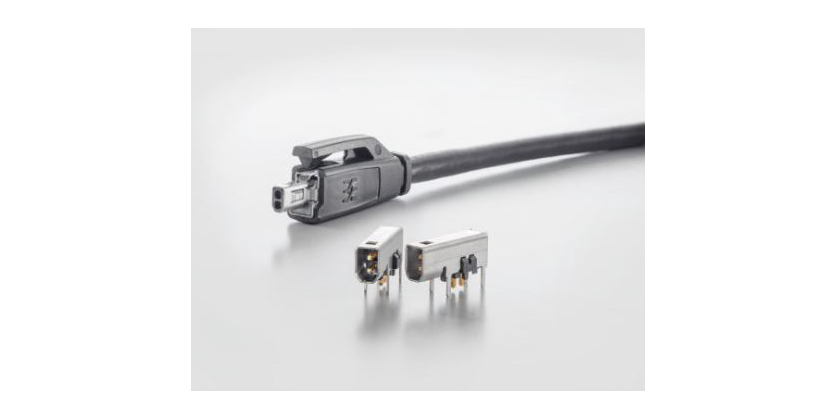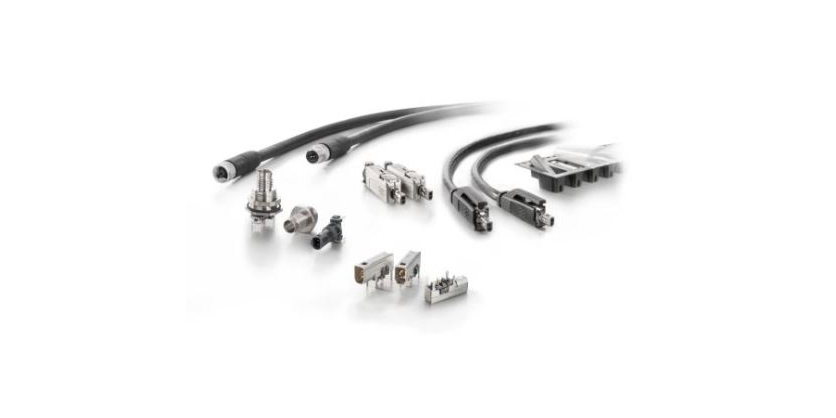Single Pair Ethernet Promises a Consistent Ethernet Connection from the Sensor to the Cloud.
The automation sector is delighted, but is also asking for standards
February 1, 2023

Single Pair Ethernet (SPE) is the catchword when it comes to the network infrastructure for the Industrial Internet of Things (IIoT). Users hope it will allow them to implement a consistent communication architecture in all applications where data is present. This is based on the concept of extending Ethernet connection right down to sensor level, i.e. wherever there are no data highways but where users need compact data transmission with a long reach.
Industrial-Ethernet networking is used in industrial applications and offers a range of benefits thanks to its real-time transmission. However, the technology is too complex for simple sensor applications. “At the sensor level, we are still using bus architectures. We now want to create an IP-based communication infrastructure with a uniform communication protocol, reaching from the sensor to the cloud”, explains Simon Seereiner, Head of Product Management SAI & IE at Weidmüller.
Adjusting data transmission rates
Single Pair Ethernet makes it possible. After all, SPE does not require excessive data transmission rates and can span more considerable distances, while also having a more compact design. Unlike cabled Ethernet connections, this technology requires just one pair of wires rather than two or four pairs. This is down to development in the automotive sector, where space and weight savings are of utmost importance.
In this sector, it is necessary to have an infrastructure that has as few cables as possible but that is able to deliver the high performance required due to the increasingly autonomous driving characteristics. “This is why automotive construction companies started to develop a protocol for Single Pair Ethernet together with the IEEE standards association right back in 2012”, Seereiner explains.
Digitalization has meant that the same issues are now becoming relevant in the industrial sector: As more and more sensors need to be integrated into machines and systems, the cabling needs to be compact and designed for industrial use. Single Pair Ethernet is the key technology that makes it possible to implement IoT applications in the industrial sectors: transfer rates of 10 Mbits/s with a transfer length of 1000 m up to 1 Gbit/s with a transfer length of 40 m are completely adequate even for complex sensor systems. Scanners and cameras for monitoring or for detecting a component’s type and location can also be continuously integrated into the network via Ethernet.

Data and power supply in one
Power over Data Line (PoDL) technology means that Single Pair Ethernet can also ensure the power supply to the connected components. Up to 60 W can be guided to an interface during simultaneous data transmission of 100 Mbit/s. “This makes it possible to supply a sensor with both power and data using just one two-wire cable. And this is all done with a small and compact design”, Seereiner explains. There is no need for an additional power supply cable, which is beneficial when spatial conditions are tight.
Power supply with simultaneous data transmission is set out in the relevant standards. The IEEE has defined a classification into different power classes for this purpose. Since classes 1–9 are already assigned to Power over Ethernet (PoE), the power classes for PoDL start at 10.
Weidmüller’s product range already includes two plug-in connectors for Single Pair Ethernet technology; one variation in protection class IP20 and one variation in protection class IP67. Both variations are part of the series of standards IEC 63171, which defines the plug-in connectors for Single Pair Ethernet.
Due to the sturdy locking mechanism, which is similar to that used in the RJ45 plug-in connector, the extraction force of at least 50 N, and industrial dielectric strength of 2.25 kV DC, the new SPE plug-in connectors have the perfect properties for industrial use. The high density means that up to 50% less space is required compared to RJ45 plug-in connectors in the IP20 environment. Furthermore, the SPE plug-in connectors can be quickly and easily assembled in the field and are suitable for cabling in the AWG 26 to AWG 22 range.
Weidmüller is taking on a pioneering role with these new developments, as this technology still has a long journey ahead of it in the industrial sector. This pioneering spirit is in the company’s DNA. Weidmüller and its inventions have always helped shape the electrical and device connectivity sector, which is why the company got involved in Industry 4.0 and digitalization right at an early stage.
Digital transformation is based on the IIOT, which allows for the continual exchange of data between all components and devices. Weidmüller has therefore been aware of the direction things are going for quite some time and has also understood how the company can use industrial connection systems to help shape digital transformation.
Pooling experience and expertise
In order to promote the development of Single Pair Ethernet for industrial applications, many experts from the fields of plug-in-connector technology, connection systems, and automation technology as well as from the cable industry have got together to develop internationally applicable standards for this technology.
And Weidmüller has also been involved in this type of technology partnership right from the start. “We want to create as broad a foundation as possible for the topic of Single Pair Ethernet, which is why our network includes manufacturers of sensors, cables, plug-in connectors, measuring equipment and chips, and also manufacturers of end devices, all of whom are working together to pool their competences”, says Seereiner with regard to the partnership.
This has created a platform for all involved companies to exchange information. “The experience of other companies can prove really beneficial, such as in the implementation of new products”, says Schreiner. The aim of this technology partnership is to guarantee a coordinated infrastructure for devices, plug-in connectors, cables, and measurement technology.
This type of uniform and consistent infrastructure is based on international standardization. With the technology of this importance, this involves an extremely wide range of organizations such as the IEEE. For the IEEE 802.3 cg project, plug-in connectors and their electrical properties were defined for the first time in the IEEE environment. All plug-in connectors can also be used if they meet the electrical properties set out in the standard.
The connectors for Single Pair Ethernet are defined in the IEC 63171-X series of standards. The design of the mating faces and the mechanical requirements of the connectors are described in the subordinate series of standards. Weidmüller’s SPE plug-in connectors are examples of IEC 63171-2 variations for the IP20 environment and IEC 63171-5 variations for the IP67 environment.
The company will be presenting its two connector solutions for Single Pair Ethernet at the Hannover Messe. “The two mating faces, i.e. for IP20 and IP67, are mutually compatible. This is particularly beneficial in field measurement technology, where users can easily connect devices with IP67 interfaces using an IP20 measurement connector and vice versa”, reveals Seereiner.
And that’s not all: “There are also plans for a 4-chamber version in addition to the single connectors”. This would allow for the cabling of four SPE systems via a single interface and with a compact design: the housing is smaller than the conventional RJ45 housing. Weidmüller is also working flat out on additional solutions to create an infrastructure for SPE technology.
Related Story
Weidmuller Ltd. Signs a Distribution Partnership with Shelley Automation
Weidmuller Ltd. has signed a distribution partnership with Shelley Automation for the Ontario region in Canada. It is part of the growth strategy embarked on by Weidmuller Ltd. under the new leadership of Michael Daly, Managing Director. Shelley Automation will market Weidmuller’s complete portfolio in the Ontario region. That includes I/O systems, industrial ethernet, relay modules, and power management, to name a few.

